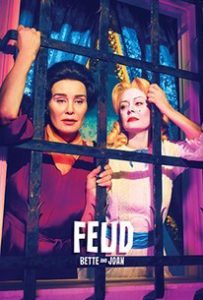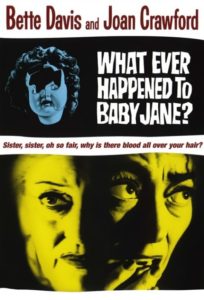Feud: Perception and Practicality
In Hollywood, all women have a sell-by date, and like any traditional sell-by date, utilization is possible after that, but not everyone is particularly excited at the prospect. However, ambition and public perception can always win out, and in 1962, Bette Davis and Joan Crawford won out, with What Ever Happed to Baby Jane? A thriller that relied on the public perceptions that both women worked for decade’s years to cultivate despite backgrounds strewn with hardships. Both women were obsessed with their careers and ambition, to the detriment of all other aspects of life. These sustained perceptions come to a head in the new FX’s anthology Feud: Bette and Joan, which chronicles how these women were not only encouraged by the studio to exploit their rivalry, but how their film succeeded by doing that exactly. Yet, it begs the question, would the 1962 film and subsequent television series have succeeded had it not been for the public perceptions that these women worked endlessly to create?
Both creative entities rely on the brand image that the women created not only for themselves, but also for the dynamic they had with each other. Long before, 1962 they were decided to be the acting rival for the other, which is why Whatever Happened to Baby Jane? was so inherently interesting, because even as fictionalized characters they were still rivals for one another. The original movie relied on the press dynamic the women created between each other, and for their, at the time, living public perceptions. Meanwhile, the television show relies on the audience knowing that Hollywood created a system in which these women were supposed to hate each other but came together to make a movie to showcase that even though they were individually past their sell-by date, that they still had creative value.
The concept behind both creative entities is not new, and is still done in marketing it is instead done through the explicit label of celebrity endorsements, by virtue of using a celebrity in question it ads intrinsic value to the item at hand, but to be effective at leveraging celebrity it does have to be aimed correctly. However, the definition of celebrity has changed, it is no longer just the movie star, and it encompasses a variety of different professions. So what makes leveraging celebrity successful for marketing? Would a movie in which the co-stars publicly hate each other be utilized as a marketing device in 2017? What is the role of celebrity perception to aid or hinder marketing in an era in which celebrities sell anything and everything, up to and including themselves? Is the old-school studio system in which personas were carefully cultivated by the person themselves as well as the studio itself, still present in the PR strategies of celebrities today?
Furthermore, I will admit, that while I knew of Joan Crawford and Bette Davis because they are incredibly famous actors whom I was expected to know, given that I studied acting at one point. However, I must give credit to RuPaul’s Drag Race for allowing me to understand fully the personas of those women had, and the impact their legacies left behind.
References:
Miller, J. (2015, June 16). Helen Mirren Thinks Hollywood’s Ageism Against Actresses Is Utterly “Outrageous”. Retrieved from Vanity Fair: http://www.vanityfair.com/hollywood/2015/06/helen-mirren-hollywood-ageism
Miller, J. (2017, March 3). Feud: Inside Ryan Murphy’s Heartbreaking Tribute to Bette Davis and Joan Crawford. Retrieved from Vanity Fair: http://www.vanityfair.com/hollywood/2017/03/feud-joan-crawford-bette-davis?mbid=nl_CH_58b9b8c7f2a983252a4f2451&CNDID=48911114&spMailingID=10550898&spUserID=MTgxNTg0NjgwNzg5S0&spJobID=1120276762&spReportId=MTEyMDI3Njc2MgS2
Olenski , S. (2016, July 20). How Brands Should Use Celebrities For Endorsements. Retrieved from Forbes: https://www.forbes.com/forbes/welcome/?toURL=https://www.forbes.com/sites/steveolenski/2016/07/20/how-brands-should-use-celebrities-for-endorsements/&refURL=https://www.forbes.com/sites/steveolenski/2016/07/20/how-brands-should-use-celebrities-for-endorse


